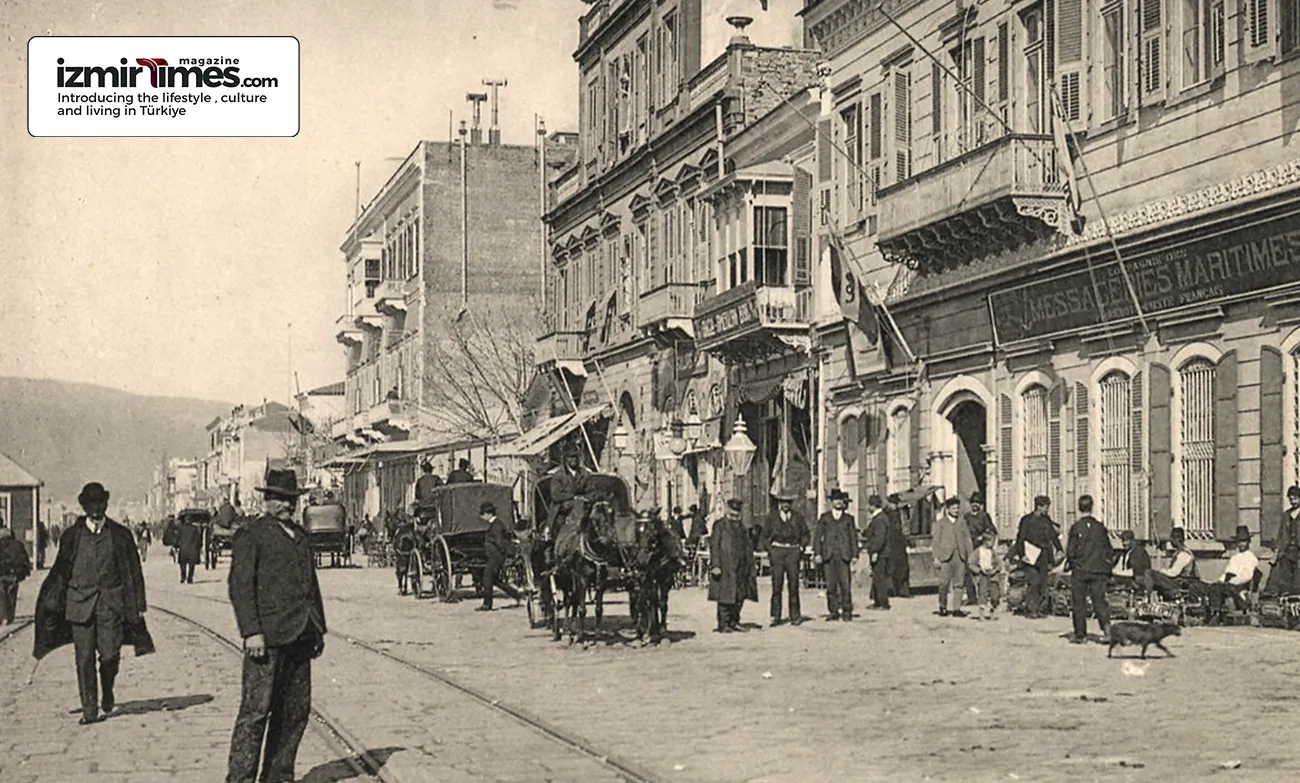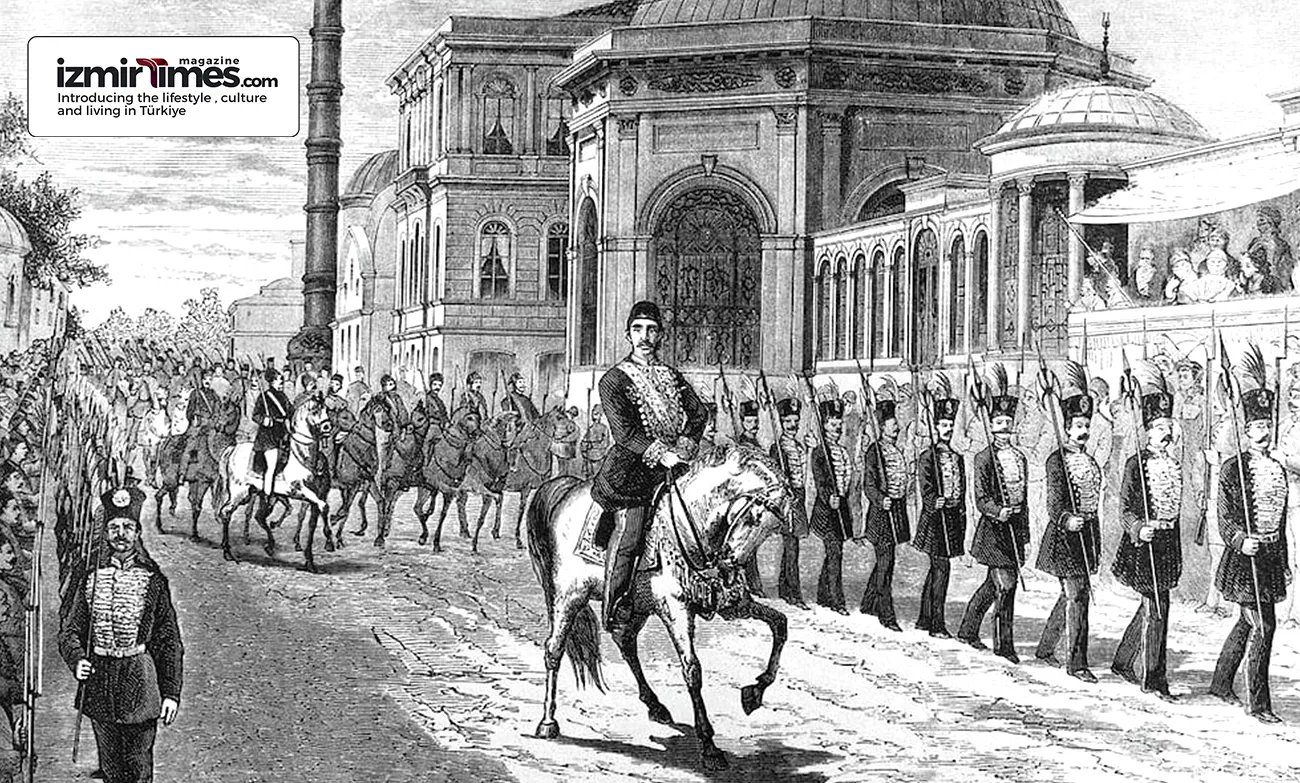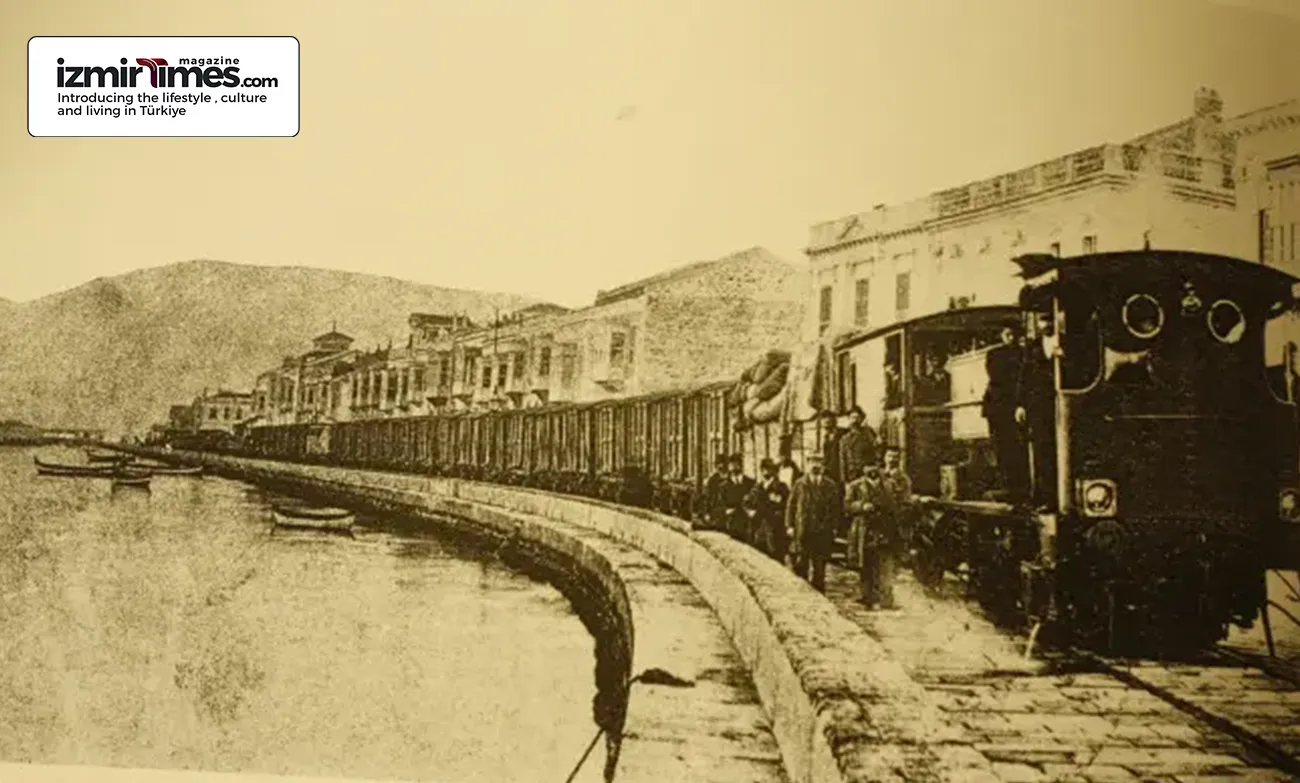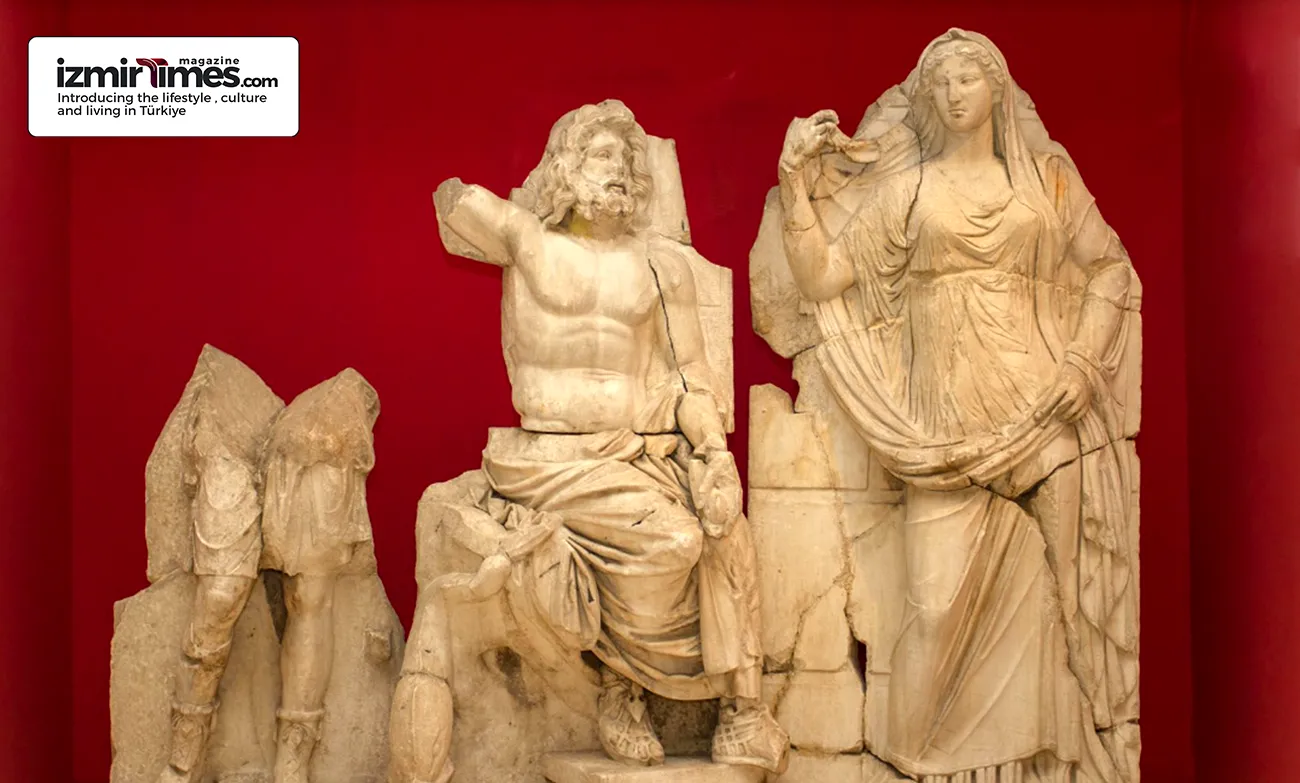Historical and Urban Information of Izmir
Everything you need to know about Izmir City

Historical information of Izmir
Izmir is a city in the Ageh region of Turkey and one of the country’s 81 provinces. It is Turkey’s third most populous city and one of the country’s leading cities in economy, history, and social culture. Its population was announced as 4,394,694 people by 2020, and this province is the 23rd largest in area. The provinces of Aydin, Baliksir, Manisa, the Aegean Sea, and the islands of the Ageh Sea surround it.
Smyrna, one of the famous cities of ancient times, made a name for itself as a city that embodies the richness of the Ionian culture. For this reason, this city was called “Beautiful Izmir,” “Old Izmir,” and (Pearl of Ionia). This city, located around the Bay of Izmir, is a vital exhibition center and a port city annually holding the Izmir International Fair. In the west of Izmir is the Urla peninsula, which has a sea, beaches, and underground hot water. Izmir is at the beginning of a long, narrow bay surrounded by yachts and ships. There are palm trees and wide streets along the coast, and the port of Izmir is the seventh largest port in Turkey.
Although there is no proven information about where the name of the city of Izmir came from, the Arctids, who lived in present-day Izmir for a while, fought the Amazons and won. The most accepted view is that their leader, Smyrna, married an Amazonian woman and named the region after her, and Izmir derives its name from Smyrna.
In addition, the name of this city was written Smyrna in the dialect of the Greeks who ruled the region for many years and Smyrna in the Athenian dialect. Today’s Greeks pronounce the name of this city as Smyrna. In recent years, traces of a village settlement with this name have been found around the ancient city of Ephesus, which is believed to have been named after a queen who went from Izmir to Ephesus and went to the village where she lived. Information about this can be found in There are also ancient sources; however, the word Smyrna is not Greek; like many settlement names in the Ageh region, it has an Anatolian origin, and the name Tismorna is found in some tablet texts found in the settlement of Kayseri Koltepe, which dates back to the beginning of 2000 BC. Is, found “ti” in Tismorna is a prefix indicating the name of a person or place; the Greeks or the inhabitants of Byrakli/Tepkol Tumulus dropped this prefix and called the city Smorna, the name of the town probably between 3000 BC It was known as Smorno until 1800 BC.

History of Izmir
Ancient times
As a result of the Dorian invasion of Greece around 1050 BC, the fugitive tribes from the Dorian front went to Anatolia. The Aeolians, who, at the end of the migration, left the Greek mainland around Edremit and Çandarlı Bay, on the other hand, the Ionians. They were settled in today’s Izmir province and its surroundings, in addition to the ancient city of Pergamon, which was one of the critical centers of the Misia region in ancient times and is located within the Bergama region of Izmir, Kime, and Pitane, the ancient cities of Iolis region, are also located inside the city.
Izmir Province borders BC among the 12 independent Ionian city-states founded by the Achaeans who fled the Dorians in mainland Greece and settled in western Anatolia around 1000, seven of them: Focaia (Focha), Klazomenai, Eritrea, Teos, Colophon, and Lebedos.
Ephesus is located within the boundaries of Izmir today; on the other hand, the old city of Izmir (Smyrna) was created on a peninsula with an area of approximately one hundred acres northeast of the bay. During the following centuries, floods formed in the present-day Bornova plain, a mile covered by Mele’s stream and today’s Yamanlar mountain. Half of the island turned into a hill.
Although the settlement around the Bayrakli/Tepekule hill, designated as the earliest settlement in Izmir, is much older than 3000 BC, the latest excavations only date back to 3000 BC.
Based on the information obtained during the excavation, the first inhabitants of Izmir built their houses on rocks 3 to 5 meters above the sea in the early Bronze Age. The found pottery shows similarities with the culture of the Trojan period (3000-2500 BC). So, the history of this city goes back to 6,500 years before Christ.
The findings of this hill show that the first settlement in Izmir in the Bornova Plain began in the Neolithic Age, and the number of settlements increased in the Chalcolithic and Bronze periods.
The writing was used in Anatolia during the Hittite period (1200-1800 BC) and reached t, the historical period. However, after the destruction of Troy VII and the Hittite capital, Hattusa, by tribes from the Balkans in 1200 BC, Central, and Western Anatolia entered the dark and unwritten age, the Iron Age, Iron Age lasted until 730 BC in the Phrygian Kingdom and 650 BC in the rest of Central and Western Anatolia with the re-use of writing in Anatolia.

The old name of Izmir is Smyrna.
The term “Old Smyrna” distinguishes the archaic-period city located at Tepekule, Bayraklı, from the town of Smyrna, which was later rebuilt on the slopes of Mount Pagus (present-day Kadıfkale). The early and ancient Smyrna was initially called “Tantalos Naulokhon” (Port of Tantalus) after the king, who was probably considered its founder, and later took the name “Smyrna.”
According to Herodotus, it was founded by the Aeolians and later joined the Ionian cities as the 13th member. The Yunis, who were among the first to come to Anatolia, settled on the coast of Western Anatolia.
During the Iron Age, ancient Smyrna was inhabited by Aeolians and Ionians who migrated from Hellas. There was no evidence of indigenous people living in the peninsula; the existence of pottery from 1000 BC shows a Greek settlement in ancient Smyrna.
The oldest surviving remains date back to 700-725 BC
From the 7th century onwards, Smyrna acquired the identity of a state, with about a thousand people living within the walls, while others lived in the surrounding villages, where there were fields, olive trees, vineyards, and pottery and stone workshops. There was a lathe; people generally made a living by farming and fishing.
The most important temple in ancient Smyrna was the Temple of Athena, dating from 640 to 580 BC and now partially restored.
Smyrna was no longer a small town but an urban center involved in Mediterranean trade. It eventually became one of the twelve Ionian cities and peaked between 650 and 545 BC, becoming a leading cultural and commercial center in the Mediterranean area at the time. This period lasted about a century and constituted the most consequential period of Ionian civilization. One of the most important signs of the brilliant period in Izmir is the prevalence of writing since 650 BC.
Lydians and Persians in Izmir
The city’s port location, close to the capitals, attracted the Lydians to Smyrna. During the Mermenad dynasty, the Lydians captured the town around 600-610 BC and burned parts of it. However, the latest analysis of the ruins at Byrakli shows that the temple was in continuous use or under the rule. Shortly after that, invasions from outside Anatolia effectively ended the history of Old Smyrna as an urban center. At the end of the war between the Persian emperors Cyrus the Great and Croesus, the king of Lydia, Smyrna, along with other cities of the Aegean Sea, came under Persian rule. With the Treaty of Antalkidas, which was concluded between the Spartans and the Persians in 386 BC, the city of Ionia, at the same time, the city of Smyrna remained under Persian rule. Although the Temple of Athena was abandoned in 545 BC, within two hundred years after that, ancient Smyrna lost its importance and function.
Hellenistic period and Roman Empire in Izmir
(333 BC – 395 AD)
BC, it is rumored that Alexander the Great, who went to Anatolia to fight the Persians in 334 AD and advanced as far as Ephesus, founded a new city here after a dream he had during a hunting break at Pagus (Kadiphkale).
Antigonus, who dominated western Anatolia after Alexander, attempted to establish modern-day Izmir on the outskirts of Kadifkale and settle the people but was killed in a battle with Lysimachus of Thrace in 302 BC. So, Lysimachus captured the city. Lysimachus, who received help from Athens, carried out the project Antigonus initiated. During this period, Smyrna advanced in trade and culture and became a cultural center with schools, hospitals, baths, gymnasiums, and theaters.
BC, in the first quarter of the third century, the city changed after the defeat of Lysimachus by Seleucus. Smyrna, which achieved a semi-independent state during the Seleucid period and was ruled by the Seleucid king III, asked Rome for help against Antiochus, and the Senate accepted this proposal; they sent a navy under the command of the Roman admiral Gaius Livius in 190 BC contributed. Antiochus was forced to withdraw from Smyrna and other cities. The fact that the town sided with Rome led to its liberation at the war’s end and exemption from taxes. After that, Smyrna became a Roman city. Although he sided with Pompey in the battle between Julius Caesar and Pompey in 49 BC, Pompey was defeated in this war.
Polmun, vice-consul under Emperor Hadrian (117-138) in the Roman era, asked the emperor for help in this city. Buildings such as Hadrian’s temple, stadium, and wheat market were built, and tax exemptions were granted. Among the structures built in Izmir during the Roman period, very few remains of the ancient theater in the northwest of the Kadifekale foothills and the stadium in the west. On the other hand, the Agora of Izmir/Smyrna is well preserved and is now called Agora. After the earthquake of 178 AD, the Agora was rebuilt with the support of the Roman Emperor Marcus Aurelius.
Izmir, where one of the seven churches mentioned in the Bible is located, plays a vital role in the development of Christianity. St. Polycarp, the first archbishop of Izmir, is one of the first disciples of John the Apostle and the evangelist. He, who was born in Anatolia around 70, was burned by the Romans in the Acropolis stadium of Izmir on February 23, 155, because of his faith.
Smyrna in the Middle Ages of Izmir
When the Roman Empire split into two parts in 395, Izmir became part of the Eastern Roman Empire, known in modern times as the “Byzantine Empire.” During the Eastern Roman Empire, the Umayyads, Seljuks, Crusaders, and Genoese fought each other to capture the city. The Umayyads first captured the city from the sea in 672 and used it as a base for their attacks on Istanbul. On the other hand, the Turks captured Izmir for the first time in 1081 under the command of Chaka Bey, one of the Seljuk invaders and the first Turkish sailor of his time. Leaving Izmir, the Byzantines recaptured the city in 1098 after the death of Chaka Bey, who terrorized the Byzantines with his attacks on the islands of the Aegean Sea and the Dardanelles. In 1204, the coastal side of the city fell into the hands of the Knights of Rhodes.
The region where Izmir is located came under the control of Prince Aydinogulari, one of the Turkmen princes established in Western Anatolia in the late 13th century. Aydin Oglu Mohammad Bey captured the Upper Castle of Izmir in 1310 or 1317. His son Aydinöglu Amur Bey fought his first war in Izmir; after two and a half years of siege, 1328 the city’s inhabitants were forced to surrender the Bandar Castle. The commander of the castle, Martino Zakaria, went to Chios. The continuation of Amur Beg’s campaigns in the following years led the Latins to petition the Pope to organize a crusade against Amur Beg. The naval force consisting of the ships of Cyprus, Venice, Genoa, and Rhodes defeated Aydingulari’s forces and took the coast of Izmir from the Turks on October 28, 1344. After Amur Bey attacked Imbros in May 1347, especially the Knights of Rhodes, who had commercial interests in Izmir, the parties tended to reach an agreement.
Although the Latins agreed to leave the city by destroying the coastal fortifications of Izmir in exchange for trade concessions from the Turks, Pope Clement disapproved of this, and Amur Bey fought to capture coastal Izmir. The ditches were filled while the castle was constantly hit with catapults, but the death of Amor Bey due to an arrow shot in March 1348 caused the morale of the soldiers to deteriorate, and they retreated to Izmir. Huzir Bey, who replaced Amur Bey, made a treaty that gave broad concessions to the Latins, so coastal Izmir remained under Latin rule for half a century.
Meanwhile, the Ottoman Empire dominated Aydin province in 1390. After Yildirim Bayezid took the throne, he received Aydin Ogulari along with his other princes, but coastal Izmir remained in the hands of the guest knights. The army of the Timurid Empire under the command of Timur, who had defeated the Ottoman Empire by winning the Battle of Ankara, took the city from the Knights Hospitaller as a result of the siege of Izmir in December 1402 and destroyed the fortress of St. Peter. After Chalabi Muhammad seized the throne and established stability, the Ottoman Empire annexed Izmir to the Ottoman lands in 1415 after a ten-day siege with the help of Christian lords such as the Knights of Rhodes and the Prince of Lesbos. Certain privileges were granted to the nationals of the States mentioned above for their assistance.
Aydin Bey and Kenid Bey, who were imprisoned in Byzantium during these incidents, were released from prison after the death of Chalabi Muhammad. They were involved in the incident of Mustafa Duzmjeh and captured Izmir again, completely capturing the city on August 2, 1424. From this date onwards, Izmir remained under absolute Ottoman rule until it was occupied by the Greeks in 1919.
The first exploration of old Izmir was done by Ciriaco d’Ancona in 1429-1430 and 1446.
About the Ottoman period of Izmir
After Izmir came under the rule of the Ottomans, it became the center of the district connected to the Pin of Aydin. This district included Karşıyaka in the north, Bornova and Buca in the east, Torbalı in the south, Çeşme, Seferihisar, and Karaburun in the west, and the center of it was the city of Izmir and the residence of the judge of Izmir. Initially connected to Aydin province, Izmir joined Sigla province in 1573, located in Kaptan Pasha Province.
Since in the Middle Ages the sea side was in the hands of Christians and the land side was in the hands of Muslims, the city was economically weak and dull. After its complete conquest by the Ottomans, it showed great development in 2014. From the 17th century until the end of the 16th century, it was considered a port that supplied the goods of Istanbul and the domestic market.
At that time, the city was self-sufficient in the crops grown in its surrounding fields, vineyards, and gardens. Food items such as grapes, figs, pomegranates, almonds, pears, and apricots, as well as necessities such as soap and beeswax, rope, hemp, sailcloth, olive oil, etc., which were needed for shipbuilding, were supplied. In the 16th century, materials were transported and provided from the vicinity of Izmir by sea to Istanbul and the palace.
Izmir witnessed the uprising of Arab Said and Calenderoglu in the Jalali rebellions in 1605-1606. However, after the capitulation of the Ottoman Empire in 1620, which granted it to foreigners, the city gradually became one of the most important commercial centers of the empire. It showed significant economic development from the 17th century.
The port of Izmir has become the most crucial center of domestic, foreign, and transit trade in a short period. In the 16th century, the most visible ships in the port of Izmir had Venetian, Geneva, and Dubrovnik flags.
Later, French and English ships joined them. These states did not have consulates in Izmir until the beginning of the 17th century; consulates were opened after 1610. Meanwhile, the city’s demographic structure began to change, and 16th-century sources state that there were nineteen mosques, eighteen synagogues, and only one Orthodox church, Greeks, in Izmir. Only one of the nine neighborhoods in the city was Christian, so at that time, in the city center, Muslim Turks were in the majority, there was an essential and deep-rooted Jewish community, and Christian Greeks must have been in the minority.
Izmir is an international port city.
In the 19th century, the city was favored by French, English, Dutch and Italian merchants. Parallel to this development, the center of Aydin province was temporarily moved to Izmir in 1841 and then permanently in 1850. Sultan Abdul Majid traveled to Izmir to visit this city the same year. When the increase in the volume of trade due to the conditions of that period necessitated the construction of a safe and faster railway, an English businessman named Robert Wilkin, who lived in Izmir in July 1855, applied for a concession for the construction of the Izmir Ra Aydin Railway and together with his four partners in May 1857, established a company called the Ottoman Railway Company from Izmir to Aydin.
The first section of the line between Alsanjak and Siddique was put into operation on October 30, 1858. This was the second railway line after the Alexandria-Cairo railway line, the first Anatolian railway line within the Ottoman Empire. It was put into operation in 1856 in the province of Egypt. In the following years, the railway line from Izmir to Bandirma and the Aydin line to Suke was extended, thus connecting Izmir to the most fertile area by rail.
After Sultan Abdul Majid’s visit in 1850, Sultan Abdul Aziz visited Izmir in 1863. The modern municipal organization in Ottoman cities began with the provincial regulations dated October 8, 1864, during the reign of Sultan Abd al-Aziz. It was followed by the first municipal mayor established in 1871 in Izmir, Yenishhirlizadeh Ahmad Efendi.
After the construction of the Aydin-Izmir railway began, when it became clear that Izmir was in dire need of a pier, in 1862, it was considered to build a ring on cranes that would provide speed and ease in loading and unloading ships. This idea later turned into a 218,574-cubic-meter wharf between Konak and Alessandjac. This harbor, built by the French contractor Dussault Brothers, was completed and put into operation in early 1876.
In the 1880s, shipping between the two sides of the bay was informal. On July 13, 1883, a thirty-year concession was given to Yahya Hayati Effendi, one of the merchants. Hamidiyeh Izmir Shipping Company started its trips in February 1884. The Izmir Hamidiyeh Ferry Company ships went to Focha and Karabron in the Persian Gulf, Ayvalik and Rhodes outside the Gulf, and daily trips inside the port. Over time, the company’s shares went into the hands of foreigners.
During the 19th century, Izmir was always ahead of other Ottoman ports in the Aegean and Mediterranean in terms of trade volume. Beirut and Thessaloniki, two important eastern Mediterranean ports, could not reach 40% of Izmir’s foreign trade in the 1880s. In the second half of the 19th century, Izmir’s exports never fell below 3 million pounds, which increased to more than 5 million in 1904 and 1905.

How did the modern era begin in Izmir?
After the defeat of the Ottoman Empire in the First World War, the conquerors of the war intended for a while to turn a large part of Anatolia into areas under their influence and divide it among themselves, and based on the Treaty of Sur, they gifted the western parts of Turkey to Greece. The Greek army occupied this city on May 15, 1919. From the very first days of the landing of the Greek army, the “first bullet” fired by the journalist Hassan Tahsin towards the Greek groups and the killing of Colonel Fathi Bey and his unarmed soldiers with bayonets in the historical barracks of the city became a symbol of resistance.
The Mistral office tower (left) and Fulcart towers (right) are located in Bayrakli, where the city’s tallest skyscrapers are located.





